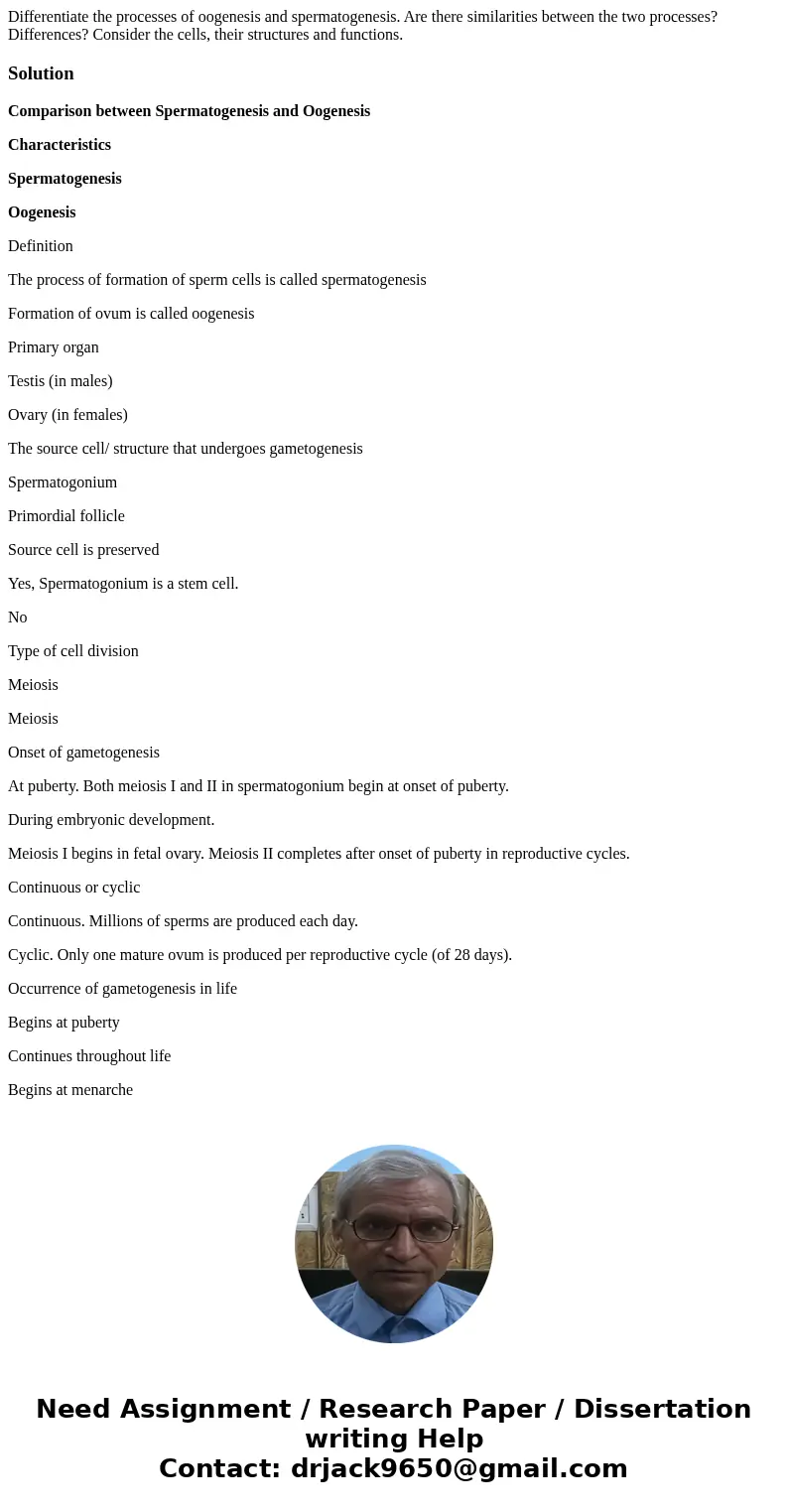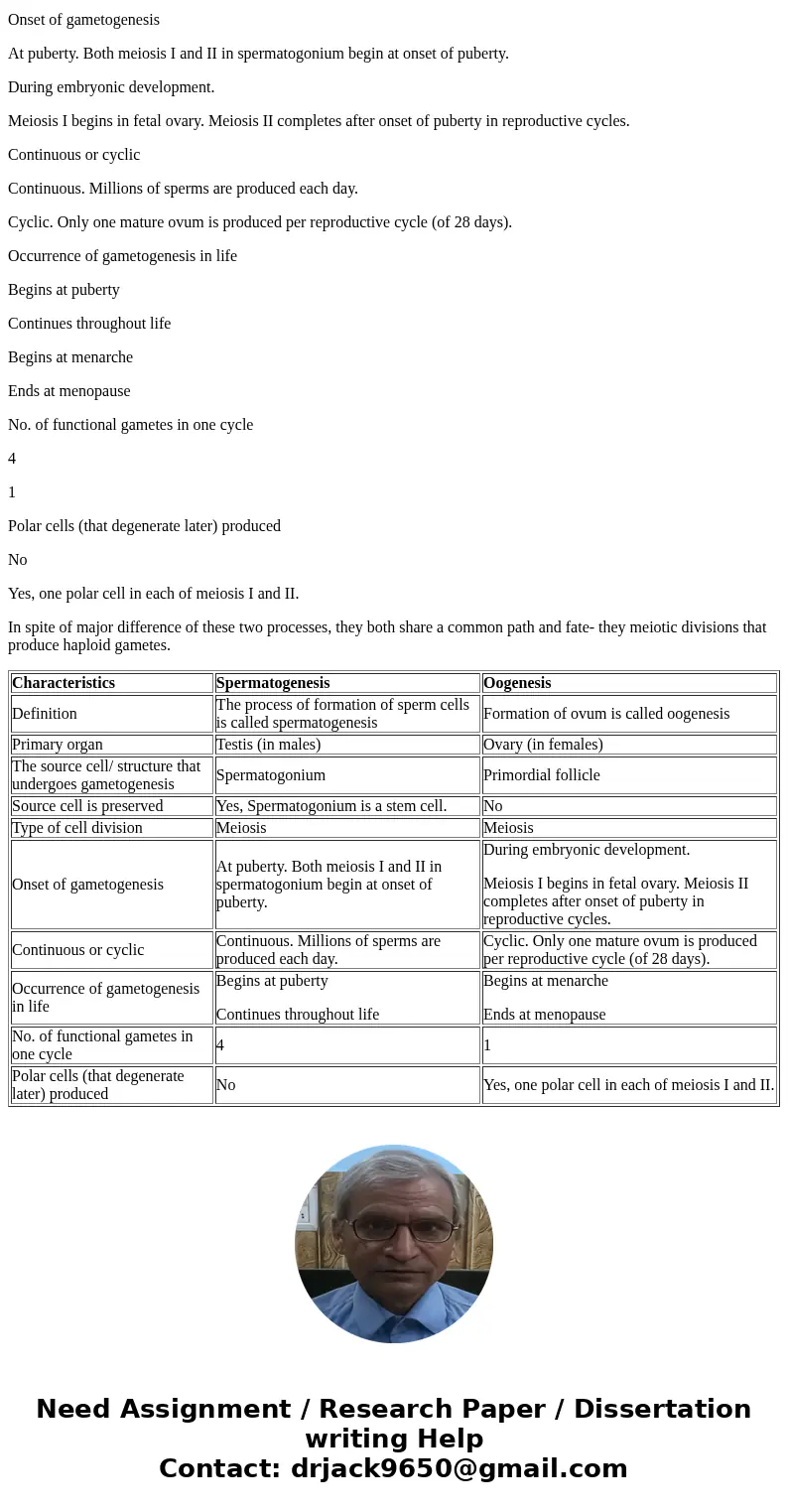Differentiate the processes of oogenesis and spermatogenesis
Differentiate the processes of oogenesis and spermatogenesis. Are there similarities between the two processes? Differences? Consider the cells, their structures and functions.
Solution
Comparison between Spermatogenesis and Oogenesis
Characteristics
Spermatogenesis
Oogenesis
Definition
The process of formation of sperm cells is called spermatogenesis
Formation of ovum is called oogenesis
Primary organ
Testis (in males)
Ovary (in females)
The source cell/ structure that undergoes gametogenesis
Spermatogonium
Primordial follicle
Source cell is preserved
Yes, Spermatogonium is a stem cell.
No
Type of cell division
Meiosis
Meiosis
Onset of gametogenesis
At puberty. Both meiosis I and II in spermatogonium begin at onset of puberty.
During embryonic development.
Meiosis I begins in fetal ovary. Meiosis II completes after onset of puberty in reproductive cycles.
Continuous or cyclic
Continuous. Millions of sperms are produced each day.
Cyclic. Only one mature ovum is produced per reproductive cycle (of 28 days).
Occurrence of gametogenesis in life
Begins at puberty
Continues throughout life
Begins at menarche
Ends at menopause
No. of functional gametes in one cycle
4
1
Polar cells (that degenerate later) produced
No
Yes, one polar cell in each of meiosis I and II.
In spite of major difference of these two processes, they both share a common path and fate- they meiotic divisions that produce haploid gametes.
| Characteristics | Spermatogenesis | Oogenesis |
| Definition | The process of formation of sperm cells is called spermatogenesis | Formation of ovum is called oogenesis |
| Primary organ | Testis (in males) | Ovary (in females) |
| The source cell/ structure that undergoes gametogenesis | Spermatogonium | Primordial follicle |
| Source cell is preserved | Yes, Spermatogonium is a stem cell. | No |
| Type of cell division | Meiosis | Meiosis |
| Onset of gametogenesis | At puberty. Both meiosis I and II in spermatogonium begin at onset of puberty. | During embryonic development. Meiosis I begins in fetal ovary. Meiosis II completes after onset of puberty in reproductive cycles. |
| Continuous or cyclic | Continuous. Millions of sperms are produced each day. | Cyclic. Only one mature ovum is produced per reproductive cycle (of 28 days). |
| Occurrence of gametogenesis in life | Begins at puberty Continues throughout life | Begins at menarche Ends at menopause |
| No. of functional gametes in one cycle | 4 | 1 |
| Polar cells (that degenerate later) produced | No | Yes, one polar cell in each of meiosis I and II. |


 Homework Sourse
Homework Sourse